This Kitchen Staple Traps Flies Like Magic (Just in Time for Summer!)
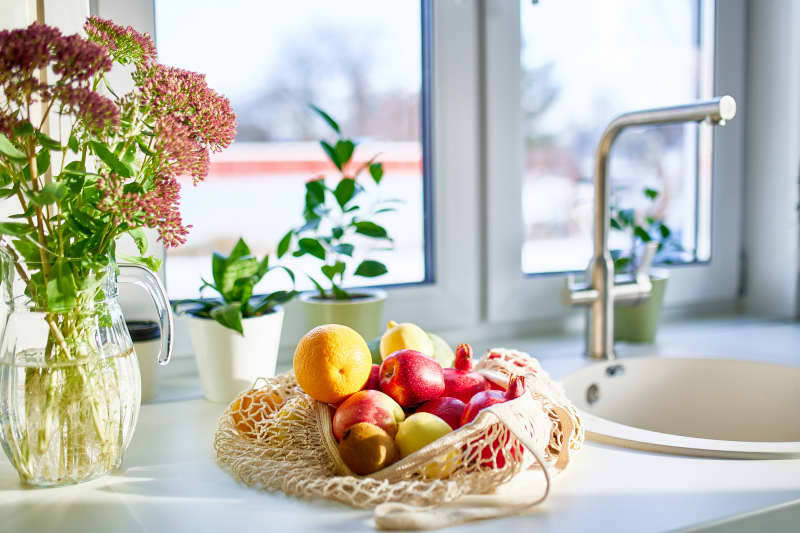
Warm summer weather often means windows and doors are open a lot more frequently — either to let in fresh air, or to allow family and friends to gather both inside and outside. Unfortunately, one thing that open windows and doors can bring is annoying pests like flies. The good news: You can create natural pest solutions with homemade fly traps that will give these pests a run for their money.
The best homemade fly traps are the ones that trap both those annoying house flies as well as fruit flies, which can hitch a ride into your home through fresh produce. (Sorry to tell you this, but that’s where they lay their eggs.)
While homemade fly traps are never going to be 100% effective, they can make a dent in your home’s pest level. The key is to use attractive bait, says Ryan Fowley, pest removal expert and COO at Excel Pest Services. The powerhouse cleaning staple apple cider vinegar is a great bet here. Not only does it have a sweet scent that fruit flies love, but it’s also easy to grab at any grocery store and totally shelf-stable.
If you don’t have apple cider vinegar, you can also sub in overripe slices of fruit mixed with water, or honey mixed with water. The key thing you’ll need to remember, no matter what bait you use for your homemade fly trap, is to add dish soap. That will help break the surface tension of the liquid, meaning flies are unable to rest on top of the water as usual. Once they slip beneath the surface, they’ll be unable to get out.
Ready to DIY a homemade fly trap? Here’s how to do it three different ways.
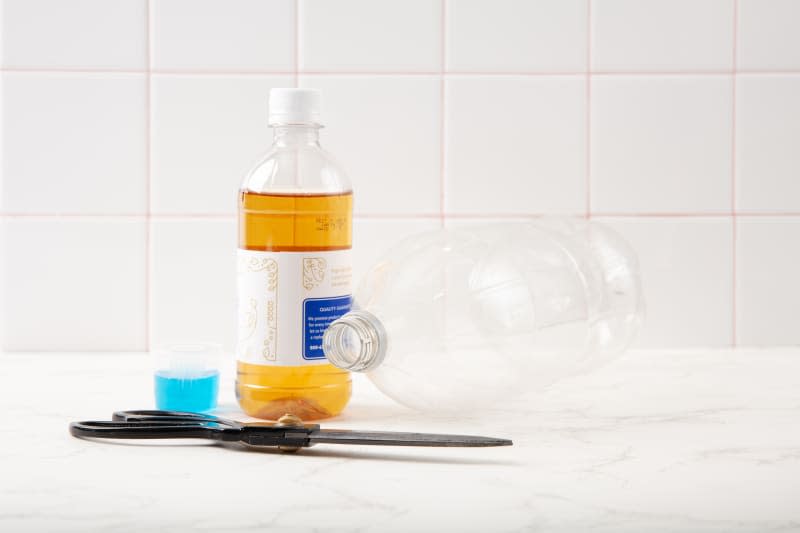
Method 1: The Plastic Soda Bottle Fly Trap
For this trap, you’ll need to raid your recycling for an empty plastic soda bottle. Any size will do! Here’s what else you’ll need.
Tools and Materials
Empty plastic soda bottle
Scissors or utility knife
Apple cider vinegar (if you don’t have this, you can sub in overripe fruit and water)
Dish soap
1. Clean the soda bottle.
Rinse the soda bottle so you don’t have to work with sticky materials. This is also a great time to remove the label, which will make this fly trap just a little bit less visually offensive.
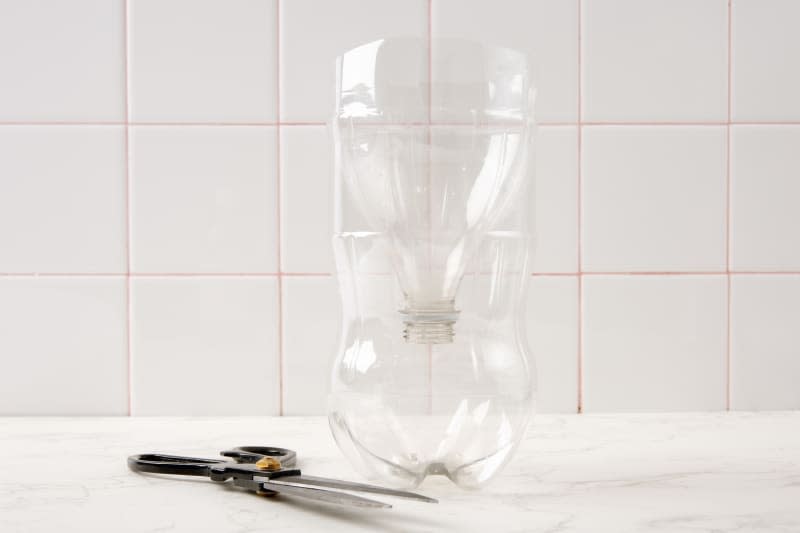
2. Cut the bottle in two.
Use a pair of scissors or a utility knife to carefully cut the bottle in two at the two-thirds mark. The bottom section should be about two-thirds of the bottle, while the top should be about one-third.
Don’t sweat the measurements too much. The key is to have a bottom section that’s just a little bit bigger than the top one.
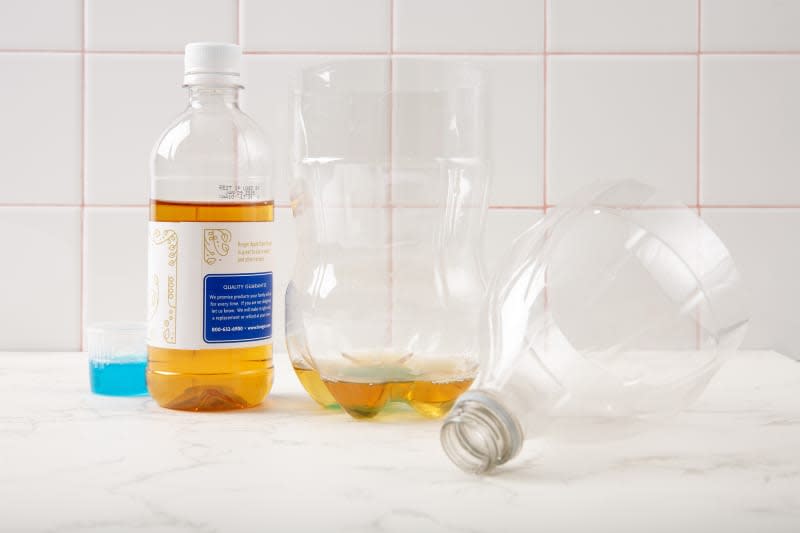
3. Fill the bottom with the apple cider vinegar mixture.
In the bottom part of your soda bottle, add an inch or so of apple cider vinegar. (If you’re using fruit, then add the sliced fruit and about an inch of water to cover it.) Then, squeeze in a couple drops of dish soap.
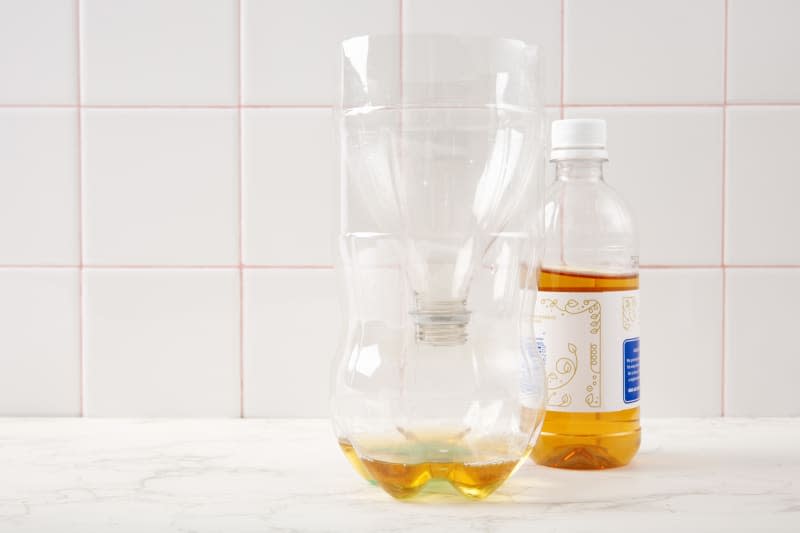
4. Create a funnel.
Turn the top piece of the bottle upside down, and set it inside the bottom piece to create an inverted funnel. The opening is small enough for the flies to get in, but it’s harder for them to get out.
The real magic ingredient here, though, is the dish soap. That breaks the surface tension of the liquid so that flies can’t stay on the surface and instead sink and drown.
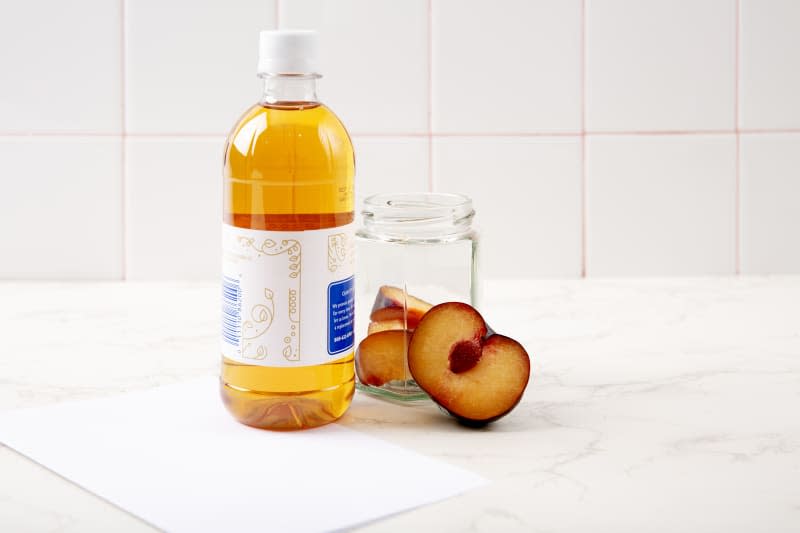
Method 2: The Mason Jar and Paper Cone Fly Trap
This fly trap requires even less work. Here’s what you’ll need.
Tools and Materials
Mason jar (any size)
Paper
Tape (optional)
Apple cider vinegar (if you don’t have this, you can sub in overripe fruit and water)
Dish soap
1. Fill the empty Mason jar with the bait.
Add a couple inches of apple cider vinegar. If you’re using fruit, add some slices and top with water.
2. Add dish soap.
Add a couple drops of dish soap to break the surface tension of the water.
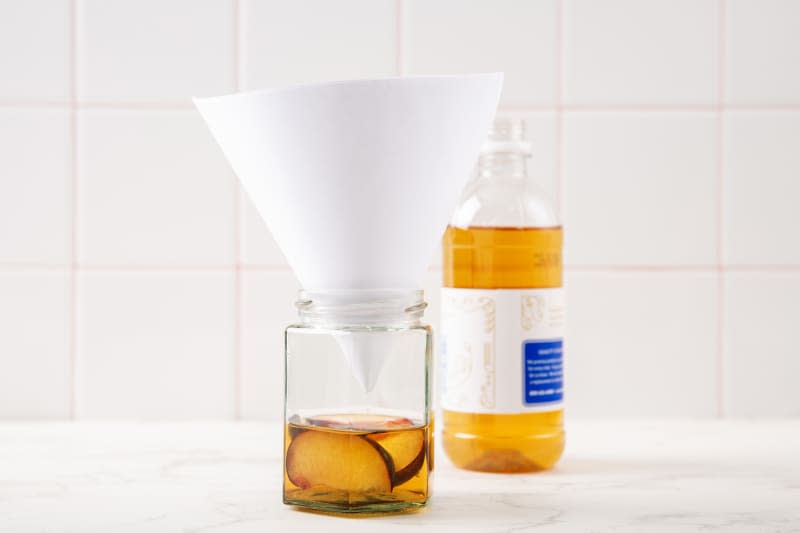
3. Finish with a paper cone.
Create a funnel using your piece of paper. Put the narrow side into the Mason jar so that it hovers at least a couple of inches above the bait. The wide side should be pointing out.
You can use a piece of tape to secure the funnel if needed.
“Fruit flies can easily enter through the wide opening but find it difficult to exit, effectively trapping them,” Fowley says — although, as with the previous trap, the real hero is the dish soap.
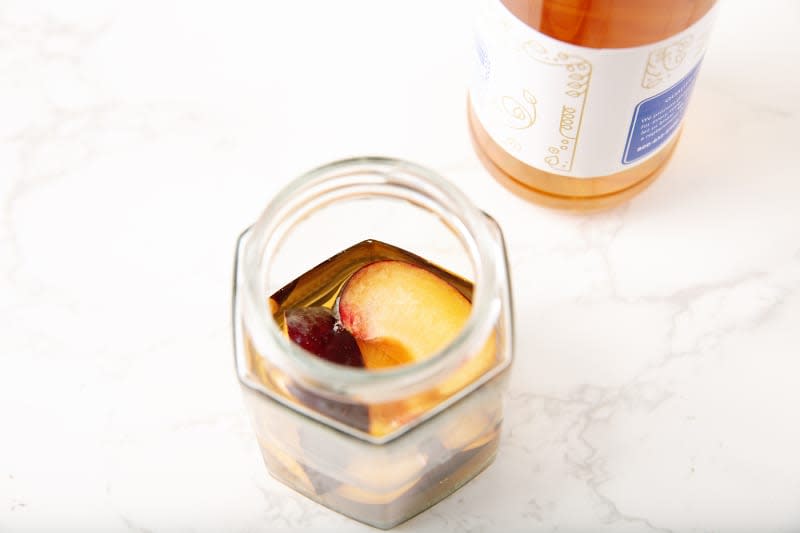
Method 3: Plastic Wrap Over a Glass
Here’s another option that’s easy to set up.
Tools and Materials
Drinking glass
Plastic wrap
Rubber band
Toothpick (or something else to poke holes with)
Apple cider vinegar (if you don’t have this, you can sub in overripe fruit and water)
Dish soap
1. Add vinegar to the glass.
Put about an inch of vinegar in the bottom of the glass.
2. Drop in dish soap.
Add a couple drops of dish soap to break the surface tension of the liquid.
3. Place plastic wrap over top.
Place a piece of plastic wrap over top of the glass and use a rubber band to secure it. Poke a few small holes in the plastic to make room for fruit flies to get inside (but not out).
This one works because “the fruit flies are drawn in by the vinegar but struggle to escape through the small holes,” Fowley says. That said, it’s the least effective option if you’re hoping to also capture house flies, as the holes will be too small to allow them in.
What to Know About Homemade Fly Traps
While Fowley says these traps are pretty effective, he does note that they are all reactive rather than proactive. In other words, they’ll help with getting rid of adult fruit flies, but they’re not going to fix the problem entirely.
“The biggest mistake people make in trying to rid their homes of fruit flies is not eliminating the source of the infestation, like overripe fruit or unemptied bins,” he says. “Regularly cleaning and removing potential breeding sites is really important, especially during summer, in reducing fruit flies in your home.”

